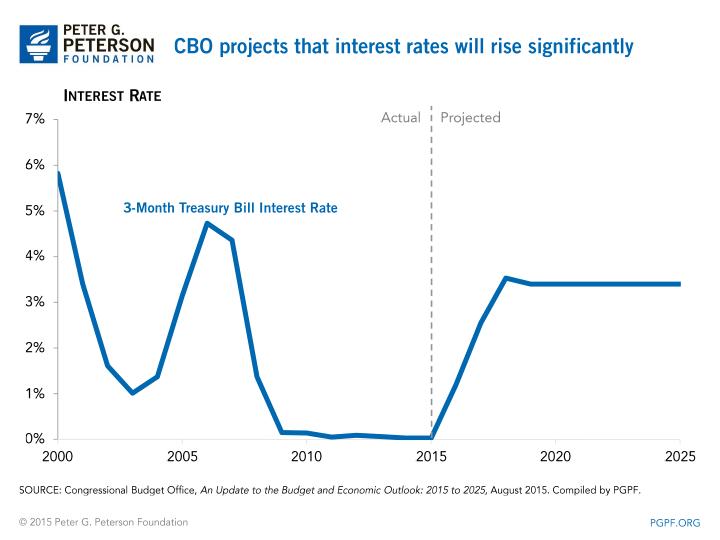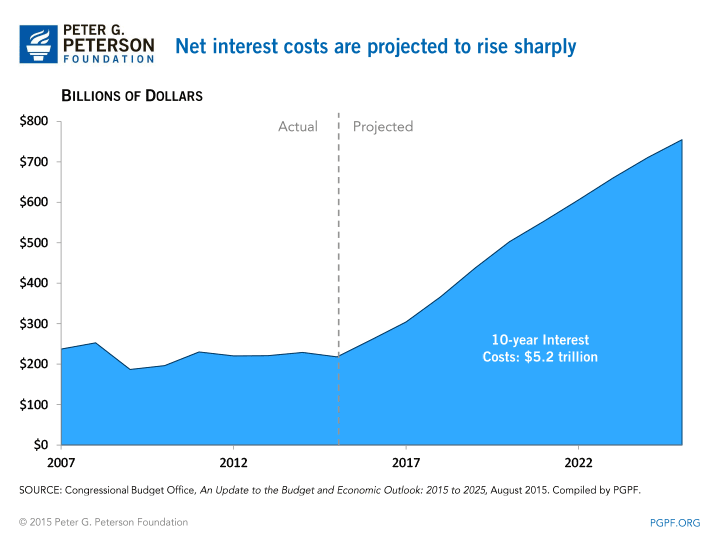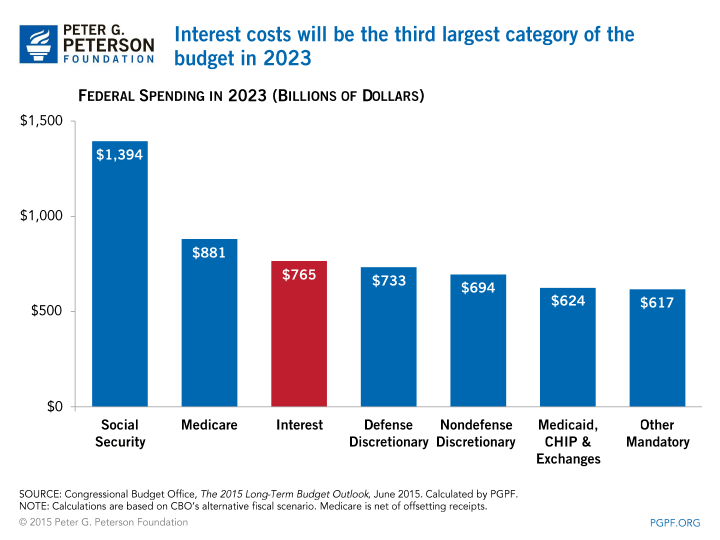You are here
Higher Interest Rates Will Raise Interest Costs on the National Debt
There has been abundant recent speculation about when and by how much the Federal Reserve might tighten monetary policy after nearly seven years of near-zero interest rates. Today, the Federal Reserve ended that speculation, raised its target for the federal funds rate by 25 basis points, and seems to have begun a gradual process of bringing interest rates back up to more normal levels. For the past 84 months, the Federal Reserve held the federal funds rate close to zero in an effort to help the economy recover from its worst economic downturn since the Great Depression.
The change in monetary policy should be viewed as a positive sign of economic strength — the economy has strengthened considerably since the depths of the recession, and the Federal Reserve’s actions reflect these improvements. There will be a number of consequences of a gradual increase in the federal funds rate over time. In the private sector, interest rates on everything from car loans to home mortgages to business loans will rise. Interest rates on government securities will also rise — and that will have significant consequences for the interest costs on our national debt.


Under current law, CBO projects that net interest costs will triple over just the next 10 years, soaring from $261 billion in 2016 to $755 billion in 2025 and totaling $5.2 trillion over the period1. And under CBO’s less optimistic alternative fiscal scenario, interest costs will become the third largest category in the federal budget by 2023 (after Social Security and Medicare), the second largest category in 2032, and the single largest category in 2040.

Ballooning interest costs threaten to crowd out important public investments that can fuel economic growth in the future. In its most recent long-term budget report, CBO estimates that by 2050, interest costs are projected to be more than three times what the federal government has historically spent on R&D, nondefense infrastructure, and education, combined.
The long-term fiscal challenges facing the United States are serious. Even though our current deficits are lower than they used to be, we are still adding an average of one billion dollars to our national debt load every day. Worse yet, we are headed toward a period of rising demands from unfunded entitlements in a rapidly aging society, combined with a tax system that fails to raise enough revenue and is filled with inefficient and costly tax subsidies. Many economists warn of this growth in debt — this year, both the IMF and GAO also released reports this year warning about the dangers and unsustainability of U.S fiscal policy.
To be clear, the culprit here is failed fiscal policy, not our monetary policy and the Federal Reserve. Congresses and presidents of both parties, over many years, have avoided making hard choices about our budget and failed to put it on a long-run, sustainable path. In recent years, many have said that the fragile nature of the recovery meant that it was not the right time to take fiscal action. Now, as the economic recovery continues to take hold, we have the opportunity to put in place sensible and gradual reforms that will put our long-term fiscal trajectory on a sustainable path.
1Under current law, CBO projects that interest rates on 3-month Treasury Bills will increase from 0.0 percent in 2015 to 3.4 percent in 2025, while interest rates on 10-year Treasury Notes will increase from 2.2 percent in 2015 to 4.3 percent in 2025. The interest rates are expressed as fiscal-year averages, and the federal government’s fiscal year runs from October 1 to September 30. Although CBO’s forecast was published in August 2015 before the end of fiscal year, the interest rate numbers for 2015 cited above are actual, not CBO projections. (Back to citation)
